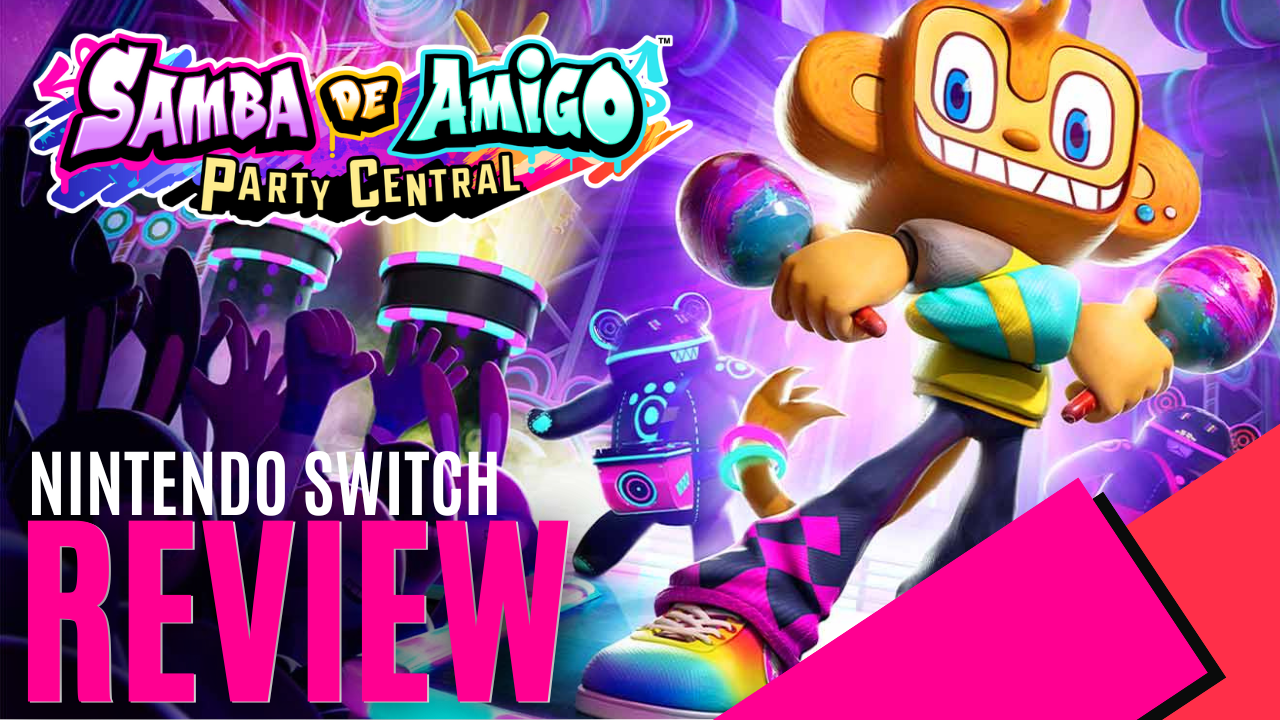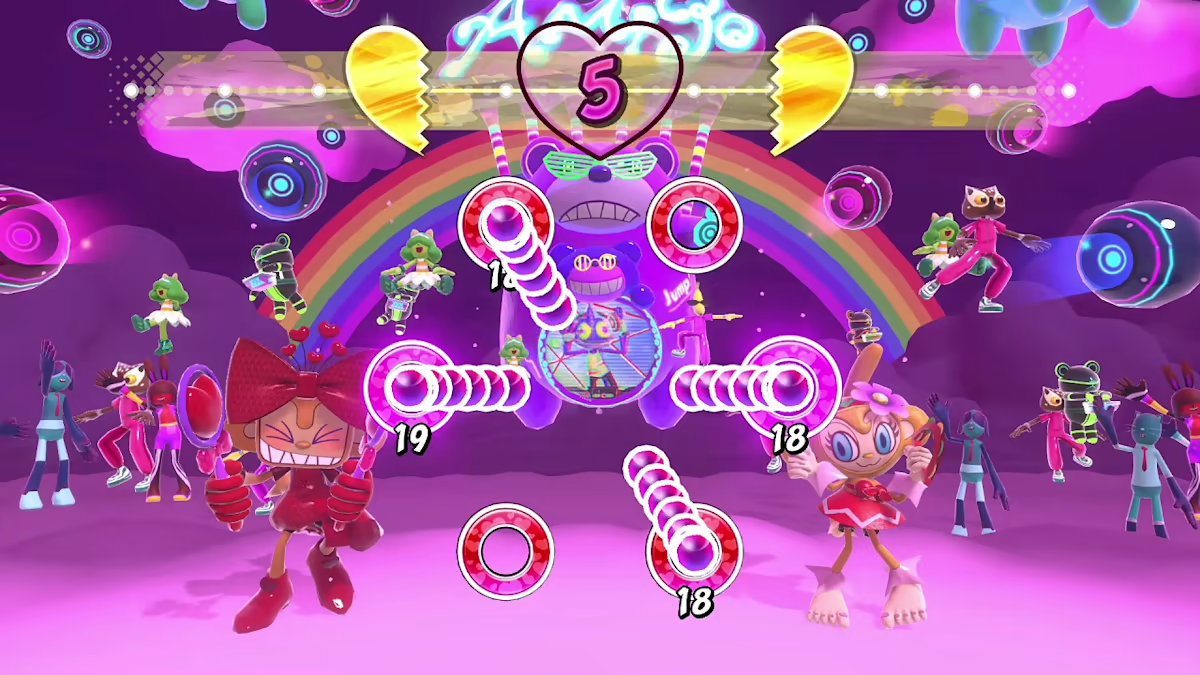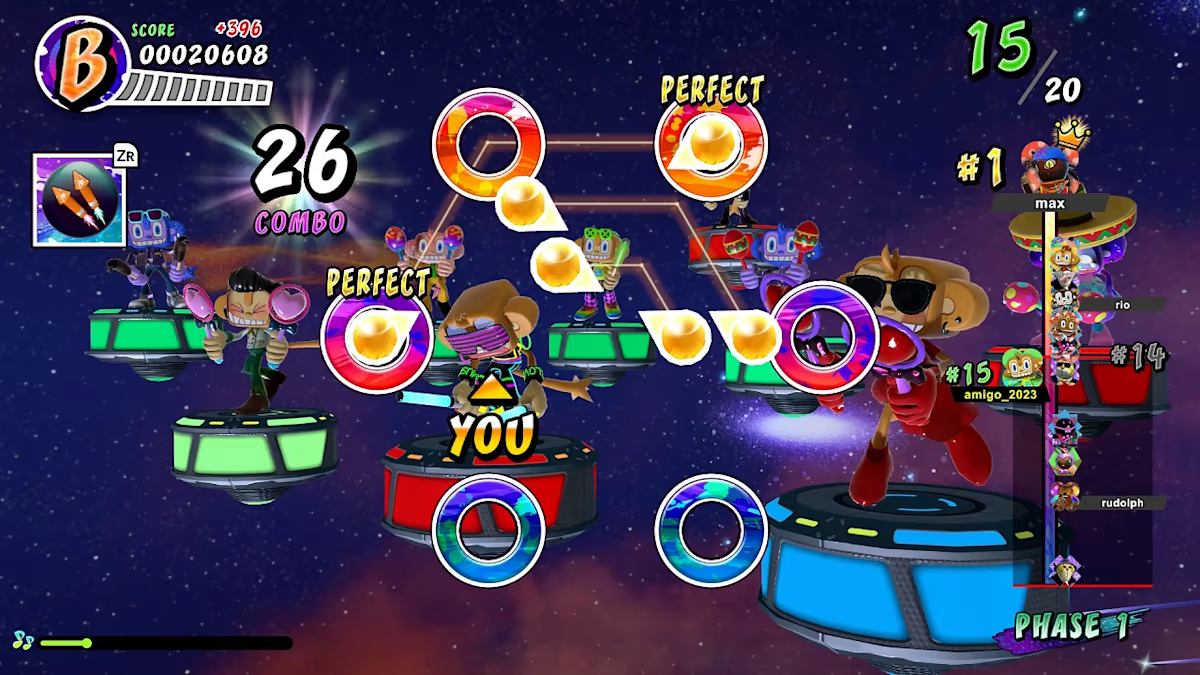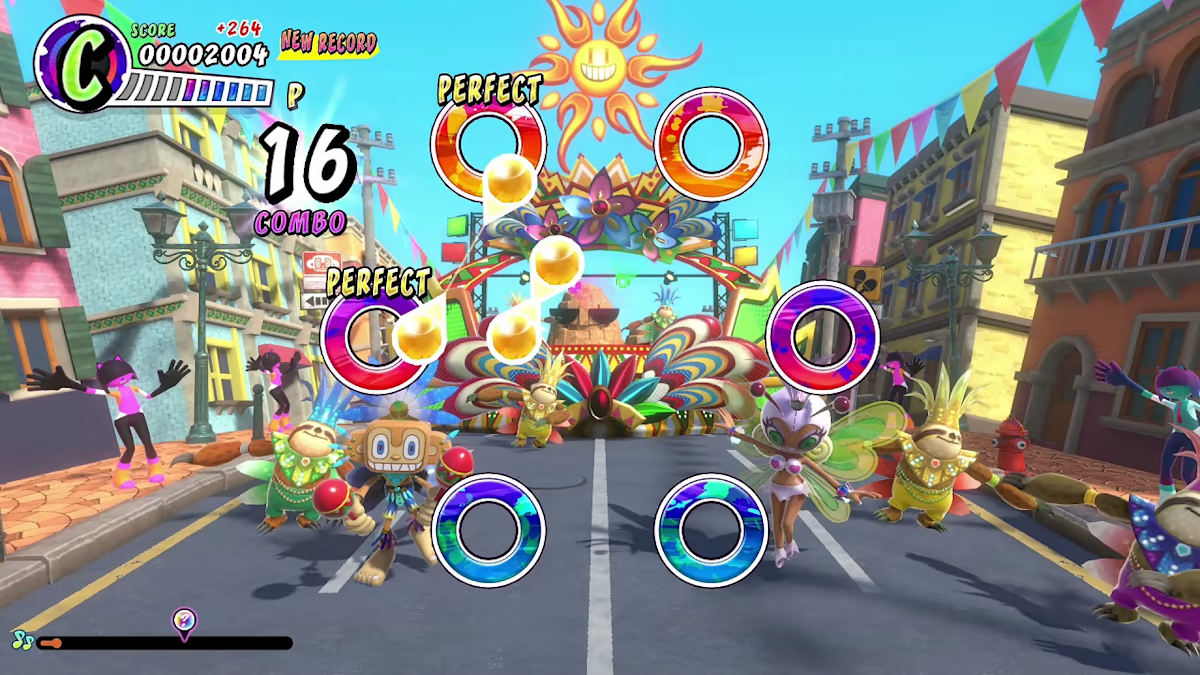
In 1999, Samba de Amigo debuted in arcades and had players shake a pair of maracas to the beat to match prompts on the screen, and it was one of the first video games ever to use controllers based on instruments, long before Guitar Hero. It was mostly seen at Japanese arcades and a few other countries, but the game really found its place on the ill-fated SEGA Dreamcast a year later.
Even though SEGA’s final console couldn’t keep up with its competitors in the years to come, Samba de Amigo was still a big hit and was well received by critics, praising its unique rhythm-based gameplay and maraca-inspired controllers that felt and sounded like the real thing.
The main protagonist, Amigo, became an instant SEGA icon, and his legacy carried on through the 2008 Nintendo Wii port of the original game, even appearing as a playable character alongside other SEGA icons in Sonic Riders: Zero Gravity, SEGA Superstars Tennis, Sonic and SEGA All-Stars Racing, and more. Even though Amigo still has a presence after all these years, his original game has never seen a sequel. Until now. After 24 years, the long-awaited sequel, Samba de Amigo: Party Central, is finally available and ready to shake things up exclusively on Nintendo Switch.
Amigo, a Latin American monkey, has come a long way since his humble beginnings, growing up in a not-so-wealthy family before getting his first pair of maracas. This changed his life forever, and he started traveling the world to share the power of music. Through his travels, he’s learned other music styles to shake his maracas to, but he always stays true to his Latin roots. In Samba de Amigo: Party Central, there is now a lot more to get in the groove too, with plenty of new songs and new challenges ahead.
There has been a whole lot of new music since 1999, and there is a ton of it packed into this game, plus many classics from the past. Samba de Amigo: Party Central features 40 tracks from the likes of Pitbull, Ricky Martin, Ariana Grande, Lady Gaga, Ke$ha, Bon Jovi, Culture Club, Icona Pop, Flo Rida, and Jonas Brothers, just to name a few, plus even some songs from various Sonic and other SEGA games.

Even more songs can be added via DLC or included in the Digital Deluxe Edition, featuring even more smash hits from other Sonic and SEGA games like Yakuza/Like a Dragon and Space Channel 5, plus Japanese songs by Ken Matsudaira and Hatsune Miku. Even more songs are on their way with K-Pop hits by BTS and Fifty Fifty due out on September 27th, but he hit song, ‘Samba de Janeiro,’ by Bellini, which was a major part of the ad campaign for the original game is sadly not available in the sequel, but could always become a future DLC.
The variety of songs covers a wide range of genres. It may feel odd that a game themed around maracas doesn’t feature more Latin music than the other genres, but the series has made it clear that the main character travels the world to experience other styles. More Latin music could always be included later on. Going through the list of songs in the game, it’s odd that the list doesn’t mention the artists’ names, only the songs themselves, and there’s no way of seeing who performed them. Hopefully, this gets added in a future update.
Along with the wide variety of music choices, the gameplay needs to match that beat. For the most part, the gameplay feels fantastic, shaking the Joy-Cons in the place of maracas to match the prompts on the screen makes the Nintendo Switch the perfect console for Samba de Amigo. Just like the original Dreamcast version, the gameplay has six points from high, middle, and low for both hands to match when prompted, plus various mini-game segments that occur.
Comparing it to the Dreamcast version, it doesn’t feel quite as accurate, as it’s easy to make mistakes when moving quickly from high to low. The game can also be played using the buttons like a regular controller, which is actually more accurate and helps get higher or perfect scores easier. The real fun, however, is of course feeling like you have maracas in your hands. Even with the inaccuracies of the motion controls, it doesn’t at all take away from the fun factor that Samba de Amigo is all about.

Four difficulty settings are available for each song, with the selections being Medium, Hard, Super Hard, and Crazy. The first three increase the challenge by adding more prompts as the music plays, which will really test your endurance. Crazy, surprisingly, isn’t necessarily harder, but it’s more like a remix of each song when entering the mini-game segments, altering the sound of the music, like how DJs create their own mixes. No matter the difficulty setting, it’s not too hard to achieve S ranks, making the game feel incredibly satisfying, very encouraging, and offering a great workout.
What could’ve really added to the experience is having maraca attachments for the Joy-Cons, especially as the Dreamcast version had them available as peripherals. There are actually third-party brand maraca attachments available online, but unfortunately nothing official by Nintendo or SEGA, who could just be playing it safe by not spending a fortune having them manufactured for a game that may or may not sell well due to the franchise’s lack of relevance in today’s gaming scene, even though it would be a crime if it flew under the radar.
Being a rhythm game, it makes for an excellent multiplayer game, and now you can take things online. Up to 2 players can play together locally, up to 8 players in a lobby, or a whopping 20 players in World Party Mode. World Party Mode is an elimination-style game that pits you against 19 other random players. Everyone must maintain the highest score possible while the lower scores get eliminated each round. It’s simple, loads of fun, and doesn’t seem to have any lag at all.
A single-player mode, called StreamiGo, is like a campaign, where Amigo aims to become an online influencer by competing against other aspiring or established influencers and build up his following by completing various unique missions. There are hours upon hours of pure fun to be had in Samba de Amigo: Party Central and plenty to unlock by completing various tasks.

There are a ton of different clothing items that Amigo can wear, even costumes based on Sonic, Tails, AiAi from Super Monkey Ball, Puyo Puyo, and an alien from Space Channel 5, as well as various maraca designs can be unlocked as well.
The graphics and overall presentation maintain its bright, colourful, and cartoony style that perfectly compliments the gameplay and all of the included songs. Each stage is unique with a lot happening in the background, like people dancing, neon lights shining, and everything bouncing. One stage is even based on City Escape from Sonic Adventure 2, used when jamming along to any of the tracks representing the Blue Blur.
All the action in the background is really entertaining to watch, but it can get distracting while trying to focus on the prompts. The settings actually have options to darken and fully white out the background, so players can keep their attention on the gameplay. There are also options to set input delays depending on the TV the game is being played on to help players get their inputs in more accurately. The game looks just as good whether playing in docked or handheld mode, but the Nintendo Switch’s small screen does make it difficult to see the prompts if positioned far away, and players will need space to move their arms around if using the Joy-Cons, especially if playing with a friend.
After 24 long years, Samba de Amigo finally gets its long-awaited and well-deserved sequel, and it does not disappoint. Even with some inaccuracies when playing with Joy-Cons, the aim of the game is to simply have fun, and it absolutely delivers. Everything the game has to offer, and the 40 plus songs available with even more on the way, offers so much variety with plenty of replay value, whether playing solo, with friends, or online. The time has come to once again gather your amigos, get the party started, and get things shaking with Samba de Amigo: Party Central!

The Good
- Finally a sequel after 24 long years
- 40 songs included with even more via DLC
- Makes great use of the Joy-Cons as maracas
- Satisfying, encouraging and a great workout
- Hours upon hours of pure fun
The Bad
- Motion controls aren’t quite as accurate as the Dreamcast version
- No official maraca attachments available for the Joy-Cons
- Hit song ‘Samba de Janeiro’ by Bellini not included
- Song list doesn’t mention the artists’ names, only the songs








